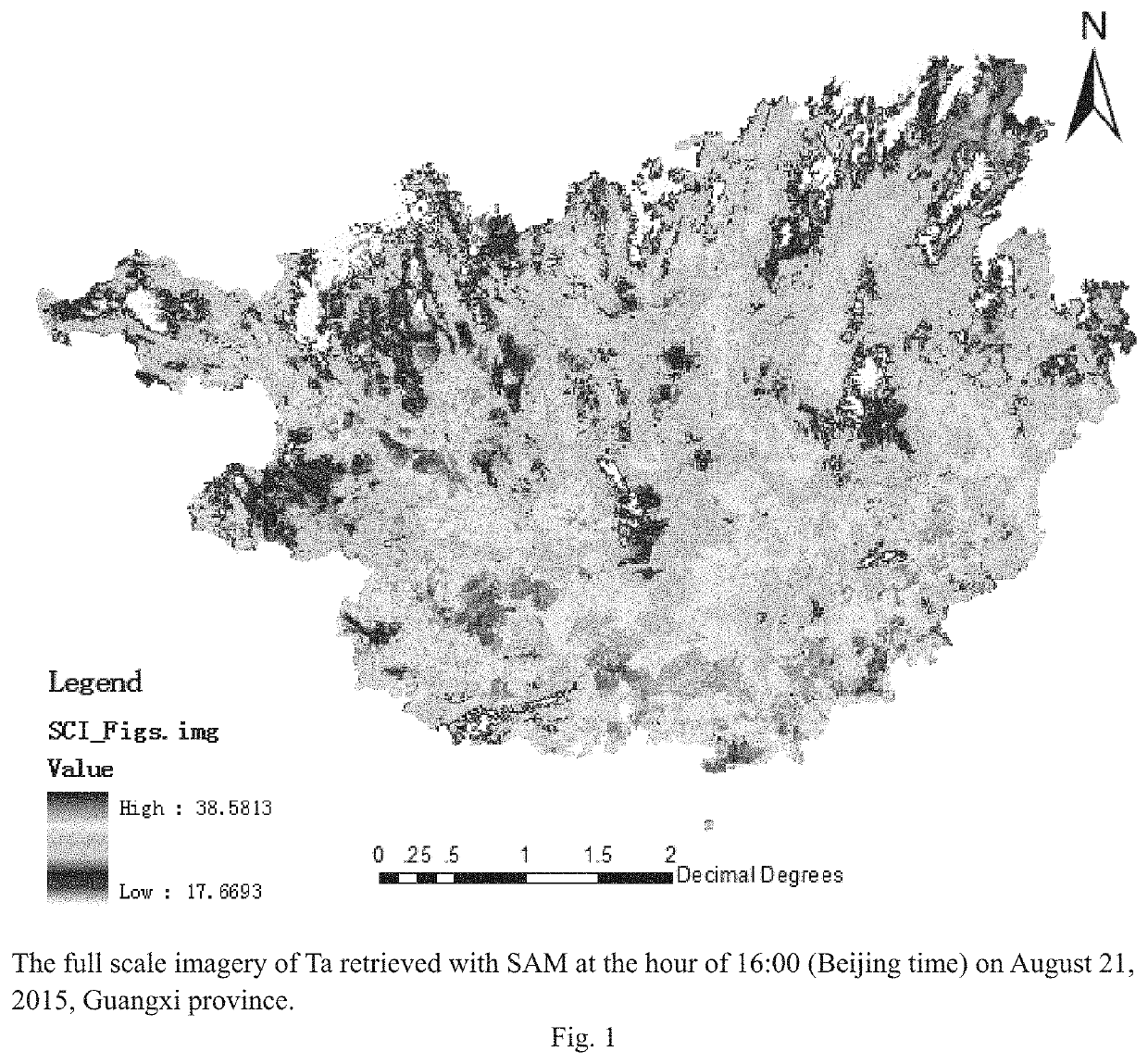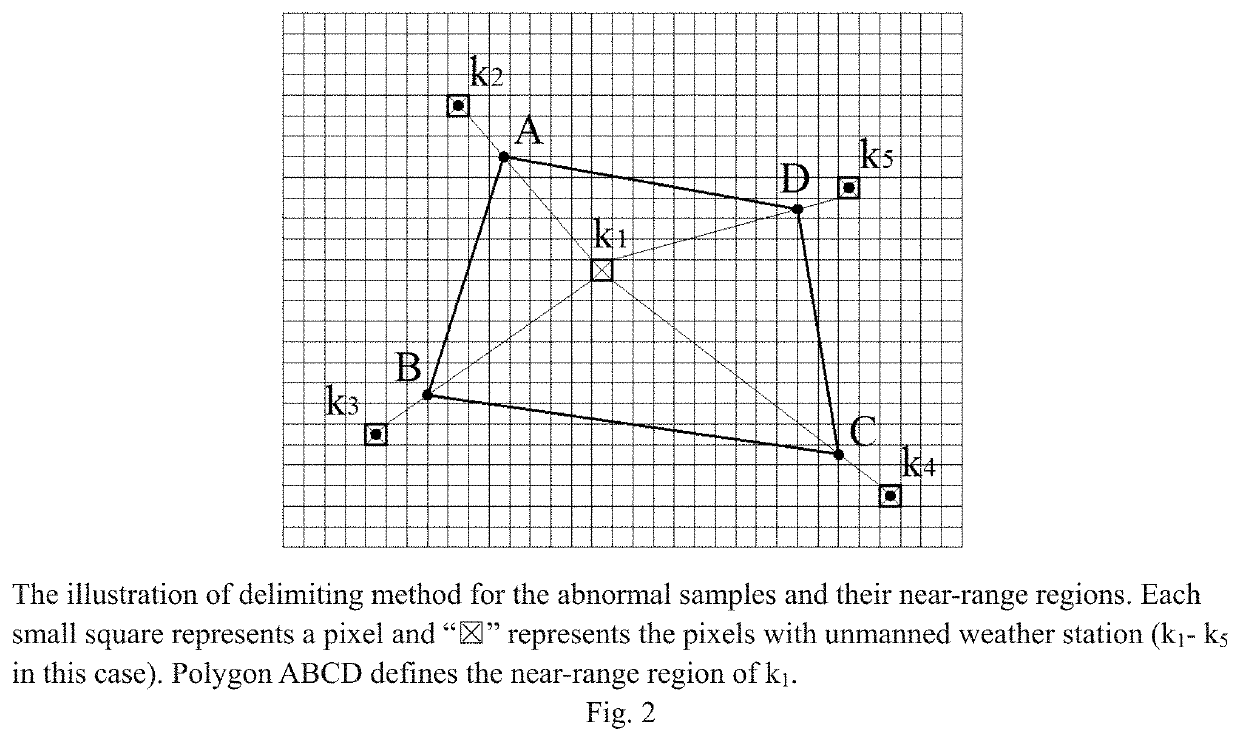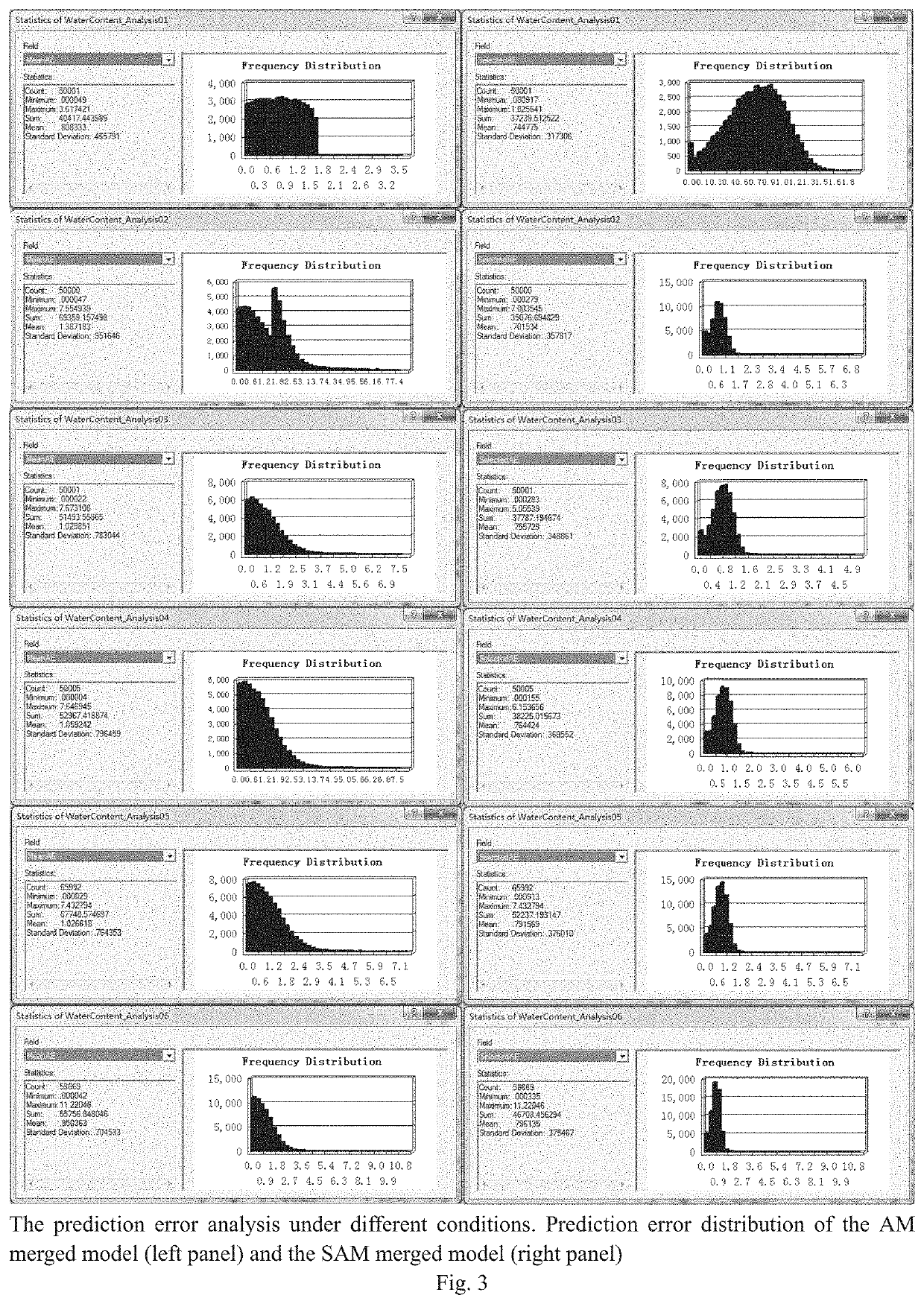Nonlinear method for area-wide near surface air temperature precision retrieval
a precision retrieval and online technology, applied in the field of meteorological data processing, can solve the problems of limiting the research and application of ta, the complexity of land surface characteristics and atmosphere variability in temperature retrieval over a large area remains a difficult task, and the temperature retrieved from satellite data can deviate from reality, so as to improve the accuracy of integrated learning, improve the accuracy of retrieval, and improve the robustness of area-wide application.
- Summary
- Abstract
- Description
- Claims
- Application Information
AI Technical Summary
Benefits of technology
Problems solved by technology
Method used
Image
Examples
case study 2
[0219]Step VIII. identifying abnormal samples in surfTf and define their near-range regions.
[0220]FIG. 2 illustrates Step VIII—abnormal samples and their near-range regions. Each small square represents a pixel and “” represents the pixels with unmanned weather station (k1-k5 in this case). Polygon ABCD defines the near-range region of k1.
[0221]σ=dk1Adk1k2
[0222]FIG. 9 illustrates Step VIII and IX.
[0223]The black dot represents unmanned weather station locations; the square represents near-range regions while the light square represents unmanned weather station with normal error and its near-range region; the dark square represents unmanned weather station with abnormal error and its near-range region.
[0224]FIG. 9(a) shows abnormal error pixels (δ=δ0=2.0° C.) (E3 and A6) and their near-range regions in the full imagery of retrieved near surface air temperature created with the 1st sub-model (Full surfT1). FIG. 9(b) shows abnormal error pixels when δ=δ0=2.0° C. (E3 and C4) and near-...
case 1
Comparative Analysis Case 1
[0252]With the same dataset (16 hour, Aug. 21, 2015), Tables 2-4 illustrate the comparisons between the selective arithmetic mean method (SAM) of the current patent and the arithmetic mean method (AM) of Patent #201510103565. Table 2 shows the results of AM to compare to Tables 3 and 4.
[0253]In Table 2, column 2 is the error evaluation of the 1st sub-model for 16 hour Aug. 21, 2015 surfT1. Column 3 is the error evaluation of the 2nd sub-model for 16 hour Aug. 21, 2015 surfT2. Column 4 is the error evaluation of the 3rd sub-model for 16 hour Aug. 21, 2015 surfT3. Column 5 is the error evaluation of the 3rd sub-model for 16 hour Aug. 21, 2015 surfT3 using SAM.
[0254]Table 3 and 4 show the error analysis of δ0=2.0 / δ1=3.0 and δ0=2.5 / δ1=3.0
[0255]
TABLE 2Prediction errors of sub-models of the arithmetic mean method*AMSAMModelVEC1ModelVEC2ModelVEC3ModelVEC3AM MergedParametersγ = 3.0γ = 5.0γ = 2.0γ = 5.0ModelMAE (° C.)1.362 1.694 1.5831.4431.137RMSEs (° C.)1.779 2.0...
case 2
Comparative Analysis Case 2
[0264]Table 5 shows the error analysis of three methods: AM (Patent #201510103565.7), SAM (current patent) and selected minimum method (SM) based on the dataset of 324,668 samples.
[0265]Using the steps described in Case study #1, near surface air temperature images (surfT) of the 16 hour, Aug. 20 to the 08 hour, Sep. 1, 2015 were obtained for Guangxi and merged by applying the three methods to obtain final temperature images.
[0266]Table 5 shows that SM method is too aggrieve sacrificing generalization and cannot ensure accuracy outside the control area. The AM is relatively conservative with less improvement. The SAM described in the current patent not only eliminates samples of unreasonable errors, but also achieves better generalization. This is true for the overall dataset (column 5 of Table 5). The MAE, RMSEs and AE≥1° C. for overall or local are 0.775° C. and 0.732° C., 1.091° C. and 0.8428° C., and 26.78% and 25.08%, respective, very similar to each ...
PUM
| Property | Measurement | Unit |
|---|---|---|
| time | aaaaa | aaaaa |
| digital elevation model | aaaaa | aaaaa |
| AE≤δ | aaaaa | aaaaa |
Abstract
Description
Claims
Application Information
 Login to View More
Login to View More - R&D
- Intellectual Property
- Life Sciences
- Materials
- Tech Scout
- Unparalleled Data Quality
- Higher Quality Content
- 60% Fewer Hallucinations
Browse by: Latest US Patents, China's latest patents, Technical Efficacy Thesaurus, Application Domain, Technology Topic, Popular Technical Reports.
© 2025 PatSnap. All rights reserved.Legal|Privacy policy|Modern Slavery Act Transparency Statement|Sitemap|About US| Contact US: help@patsnap.com



